ECG at home: a selection of portable devices
Recent domestic projects, one of which we presented, the other - appeared on GeekTimes in the "author's" post, prompted the thought of a short selection on the subject of portable ECG devices, and all that we found was under the cut.
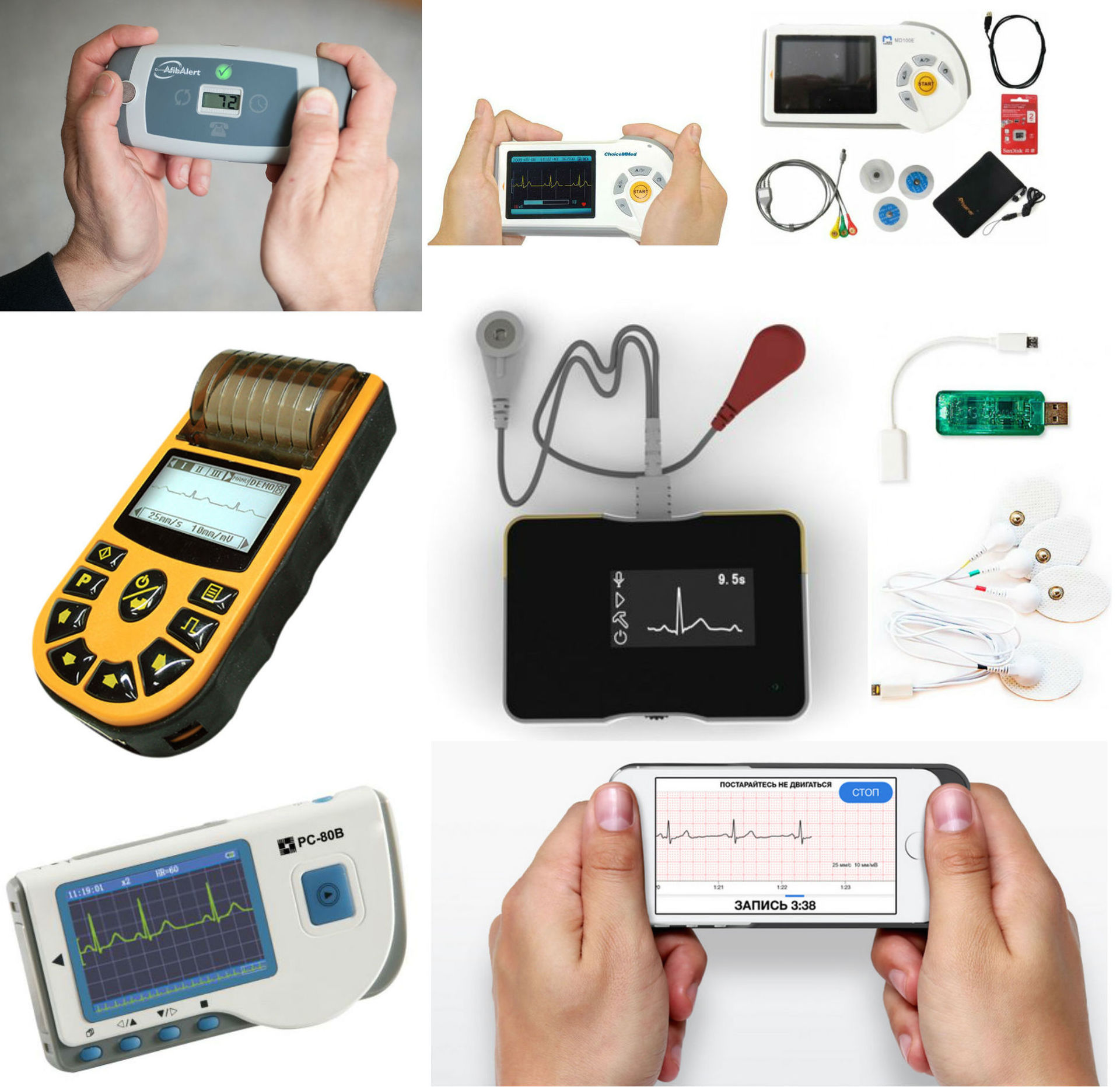
AfibAlert
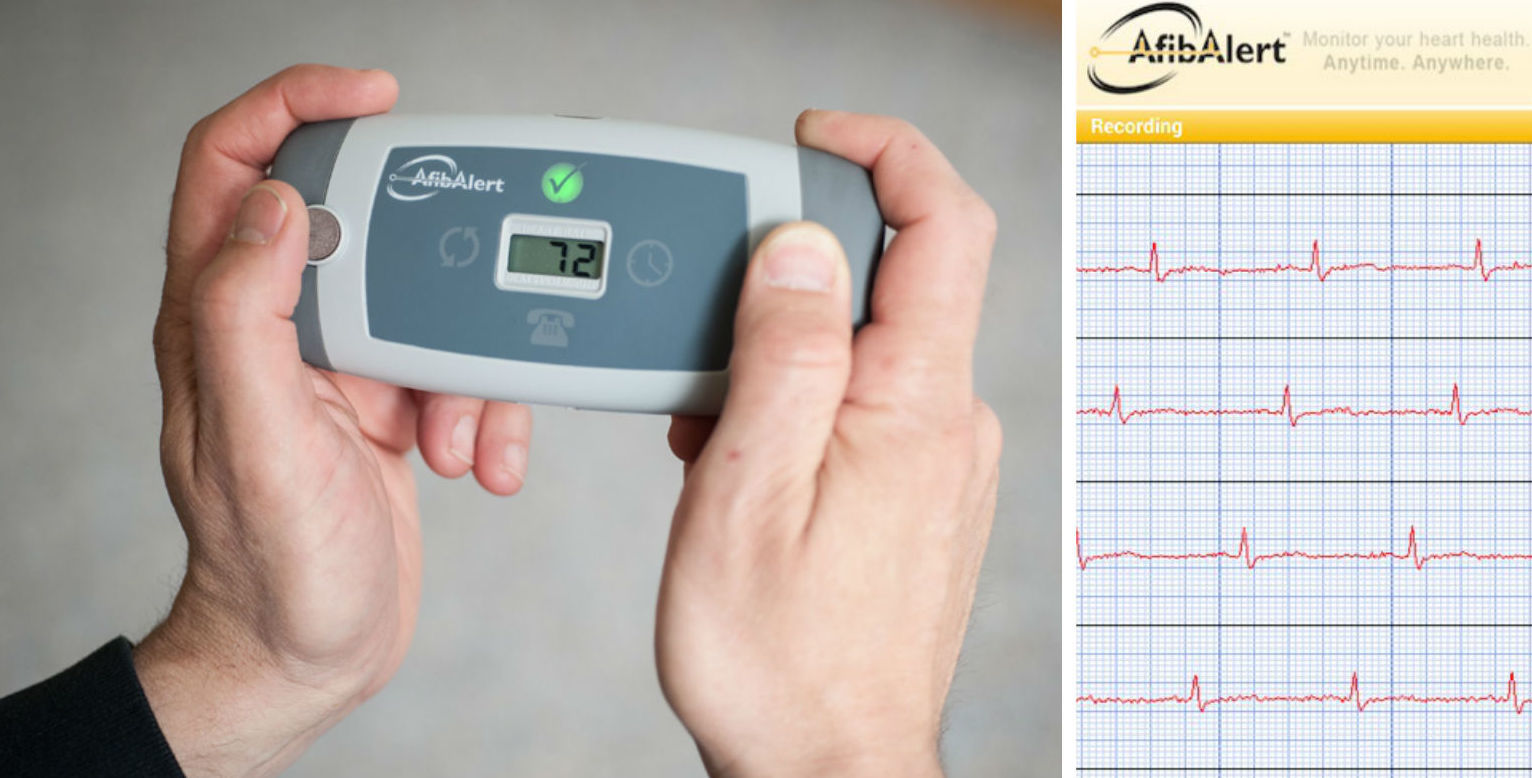
Device , which was created specifically for the diagnosis of atrial fibrillation , although it records the ECG completely. After the procedure, the user receives instant color notifications, and if the “red phone” lights up, you must immediately contact a doctor! A yellow indicator means that no data has been received, and green, which is logical, notifies that there are no risks at the moment. During the measurement, heart rate is also displayed.
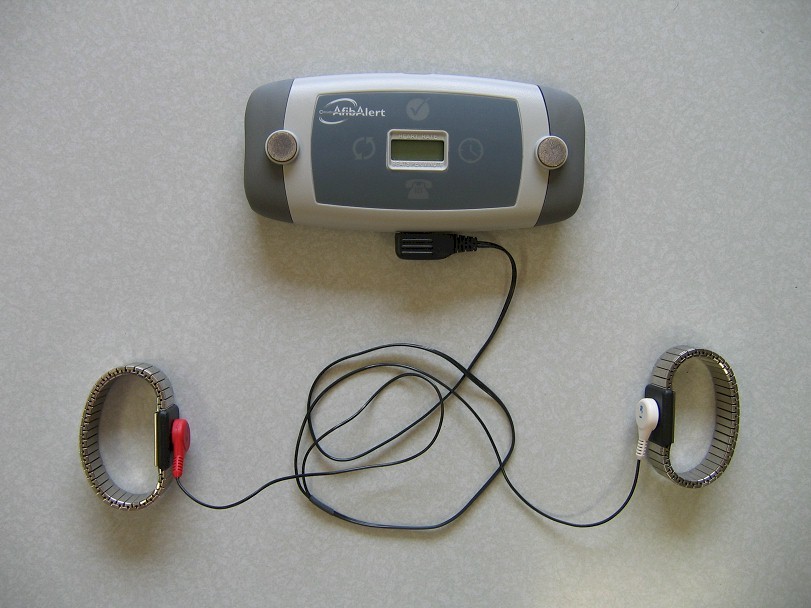
ECG data can be extracted in several different ways, including using mobile applications for iOS and Android. The user can also upload them via USB to a computer and send them to the AfibAlert cloud to open up the possibility for their doctor to work with them.
AliveCor Mobile phone
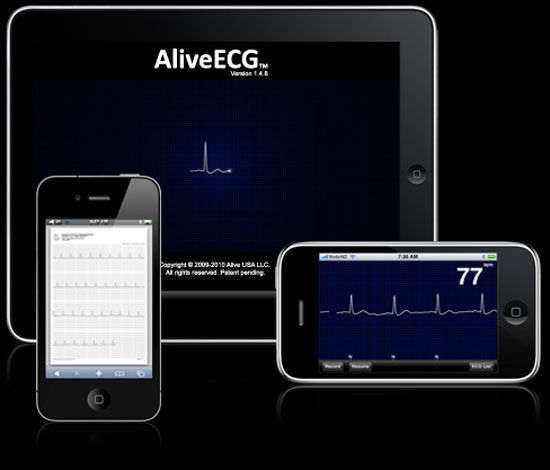
case that allows you to record ECG. Quite a “loud” project, actively supported by the press. Measurement data remains in the smartphone’s memory and can be viewed on a computer. Also, for an additional fee, you can get a decoding of a cardiologist.
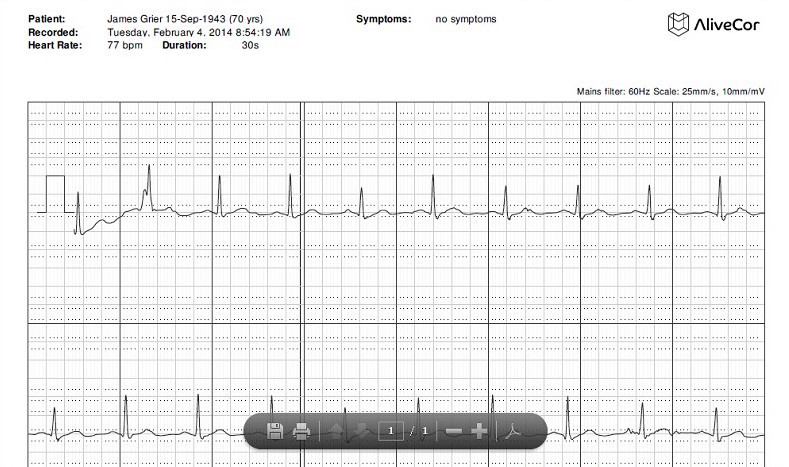
Measurements are most conveniently made by placing fingers on the contacts of the device. At the same time, you can “change” the leads by taking measurements from the chest or by applying a cover to the leg. Currently, the range has expanded, and users are invited to buy a separate “plate” with contacts instead of a cover.
CardioQvark
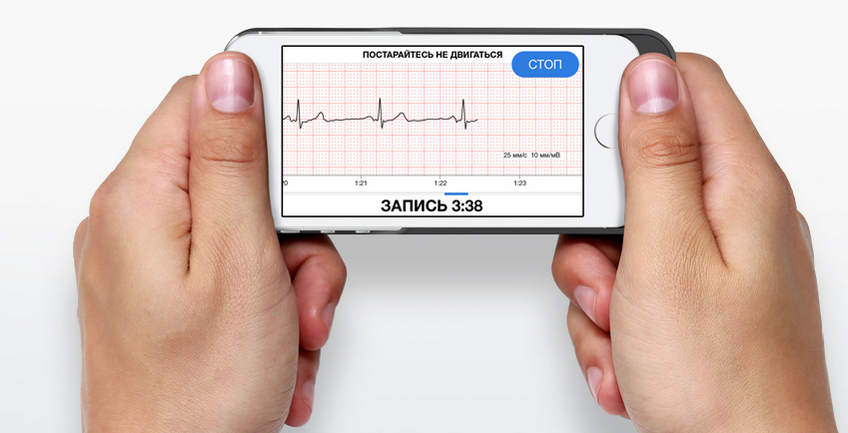
Another case that alinatestova recently wrote on Geektimes . Despite the outward resemblance to AliveCor, the device works using a different technology, and its menu is a little more informative. At a meeting with the authors of the project, we were told that the process of obtaining a medical certificate was launched for the project, and at the moment it is undergoing clinical trials in Moscow hospitals.
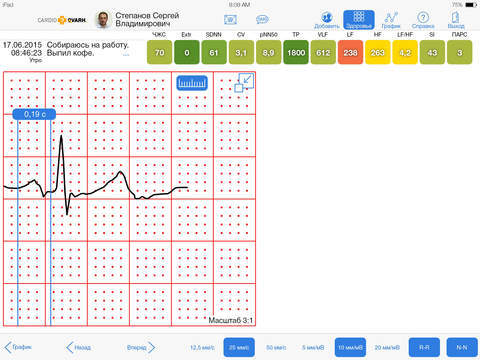
CardioQuark allows you to record ECG, control the balance of the autonomic nervous system, and analyze stress levels. For the convenience of the user in the application there is a "traffic light scale", which is not a diagnosis! But it tells how the condition is satisfactory / not satisfactory. The rest of the application communicates in a “medical” language that is understood by a cardiologist, whose services are available in the cloud service.
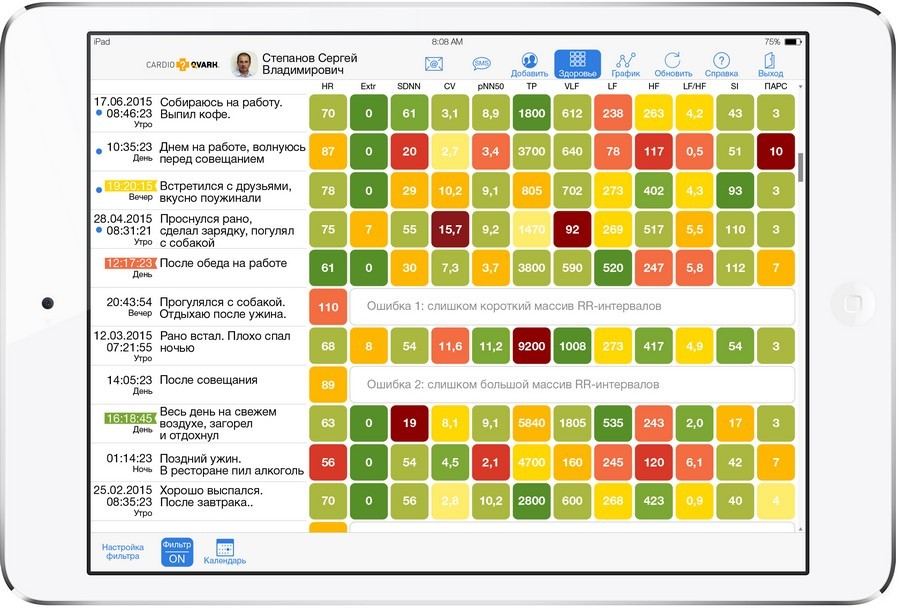
The project was created by domestic scientists.
ECG-Chek

Another case with two electrodes, which allows you to record ECG on a smartphone or view it on a computer. It has its own warning system.

CardioPad

Most similar to both of the previous ones - CardioPad from RootiLabs. In fact, it will be a slightly cheaper analogue of the W / me2 tracker , and in this case, the ability to measure pressure will also remain a key advantage over other gadgets.

While CardioPad's interface is not completely clear, and perhaps it will work with the W / me2 application. There, the ECG is shown in this format:
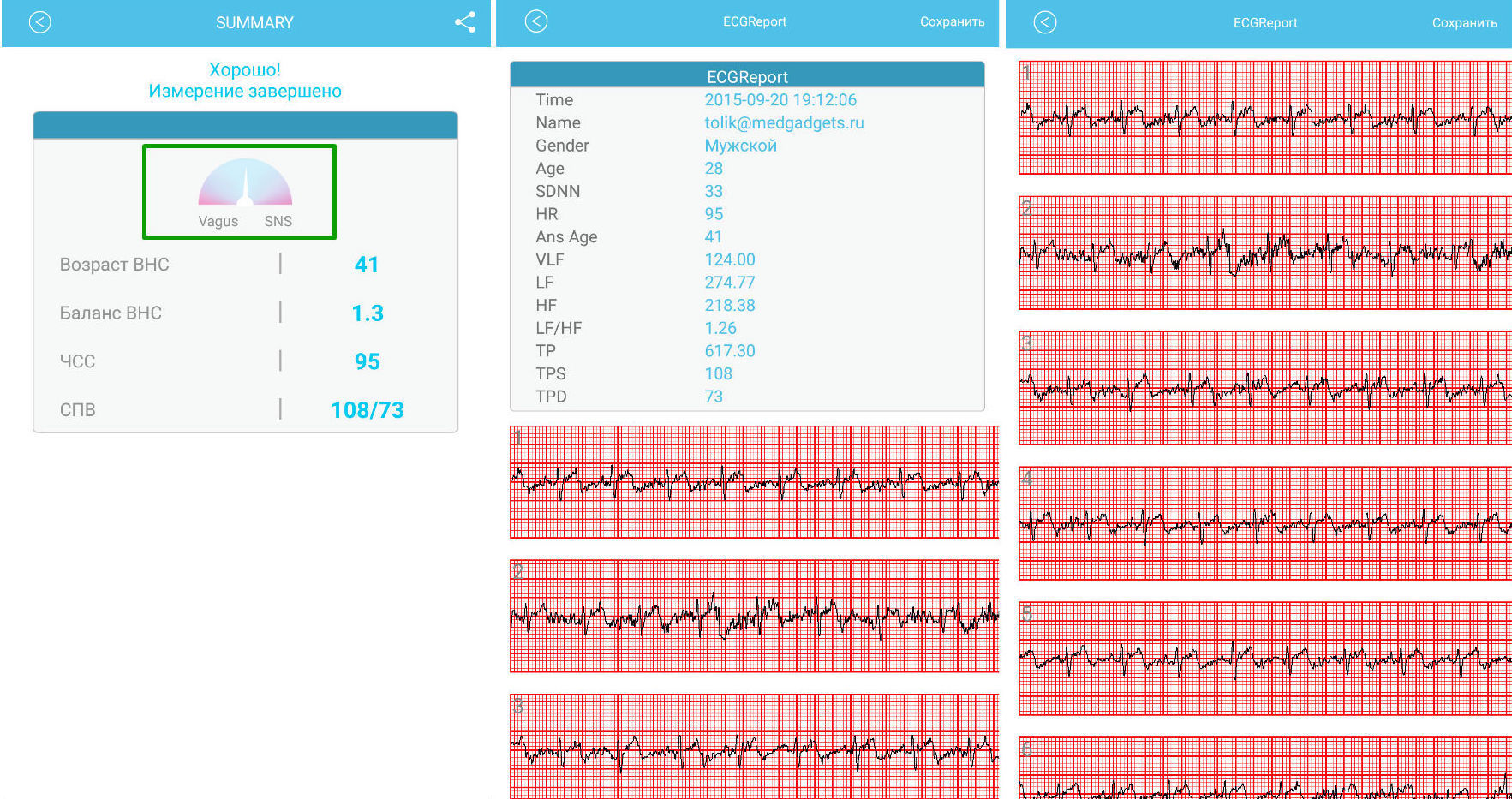
In Russia, W / me2 appeared in September last year, and by now we have spent a lot of time on our part with software. In the latest update, the ability to calibrate the device became available, after which the pressure readings became even more accurate.
Dimetek Micro
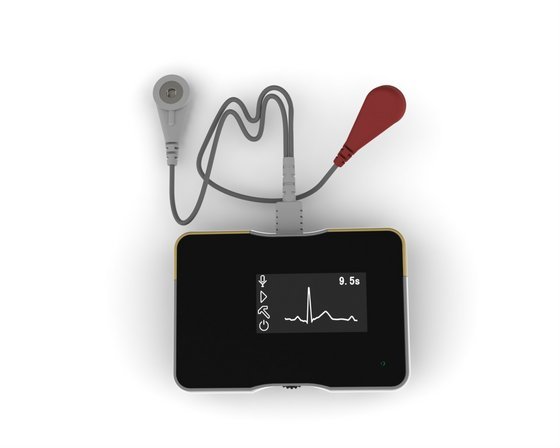
Portable and standalone deviceapproved by the FDA. It can be used in several modes, including as a halter - for continuous monitoring. Data is stored in the device’s memory, so access to the doctor’s data is impossible. In order to get a consultation, it is necessary to extract: print or send the ECG by mail.

Express-ECG can be recorded with two fingers, while for longer monitoring it is proposed to use electrodes, which are also equipped with the device. Plus, a special carrying bag is included.
HeartCheck Pen The pen was
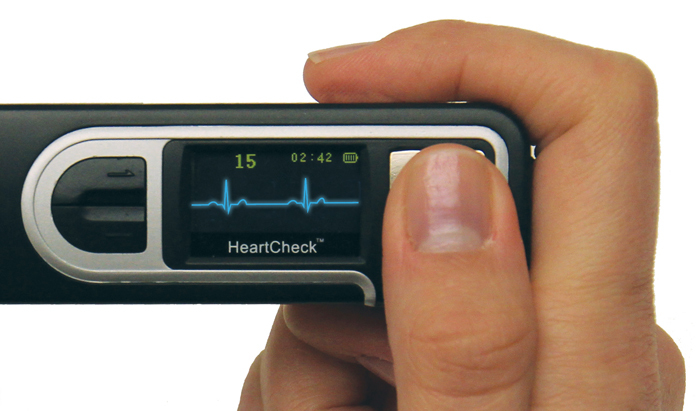
once the first device approved by the FDA. It is convenient to carry in your pocket, easy to use, and the principle of action is to pinch with two fingers.
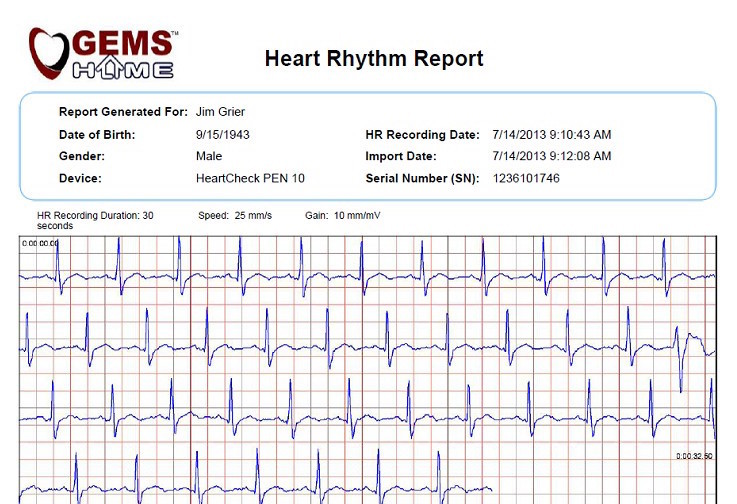
The device is recommended as a means of monitoring after heart attacks, strokes or heart operations. It will also help to track the effect of drugs on health. No additional wires and electrodes are provided. Up to 20 measurements are stored in the device’s memory, after which they must be saved on a computer. The pen itself has a small digital display.
InstantCheck A
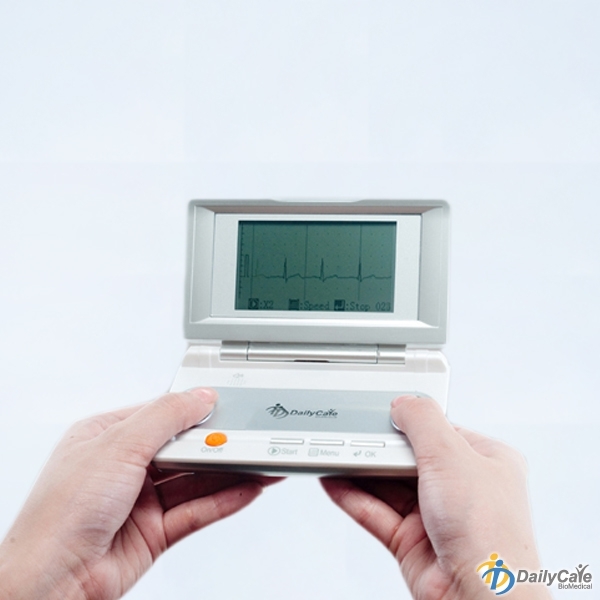
console-like ECG device offers 30-second recordings that can be instantly watched on the display, stored in the device’s memory, and then retrieved to the computer using a cable.
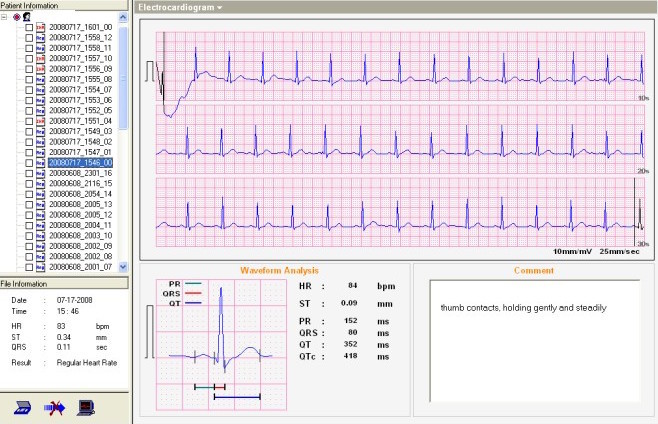
There is also a continuous monitoring mode, but this can not be called a full-fledged halter, since recording is carried out all the same for the last 30 seconds!
ChoiceMmed MD100E
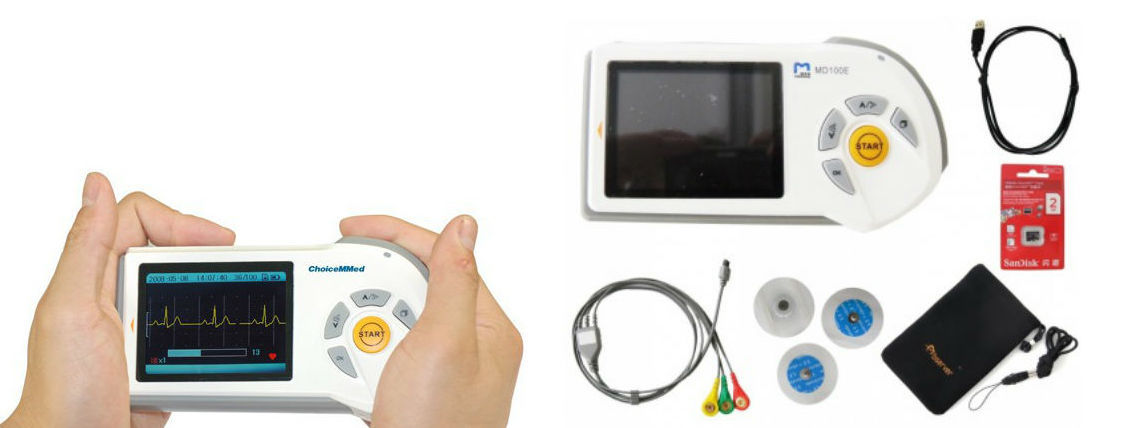
Deviceit has a display that allows you to instantly display data, allows you to take an ECG c with your fingers due to the electrodes located on the sides or with the help of special cables that are also included.
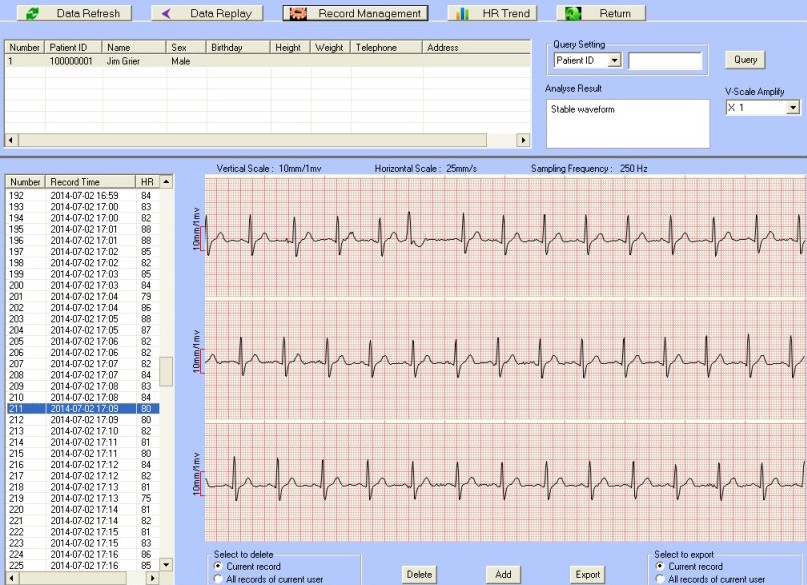
The entire measurement process is visible on the display, and a brief analytics is offered in the final: a general characteristic in the form of a system of emoticons and data on heart rate. For further work with data, you need a computer and special software that is included on the disk.
ECG PC-80V
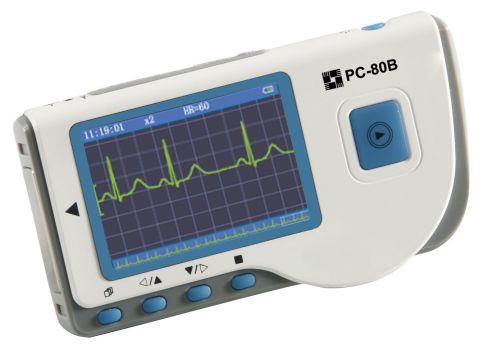
Simple, compact, and one of the first portable ECG monitors to survive for several generations. Currently, the more famous model is 80B .
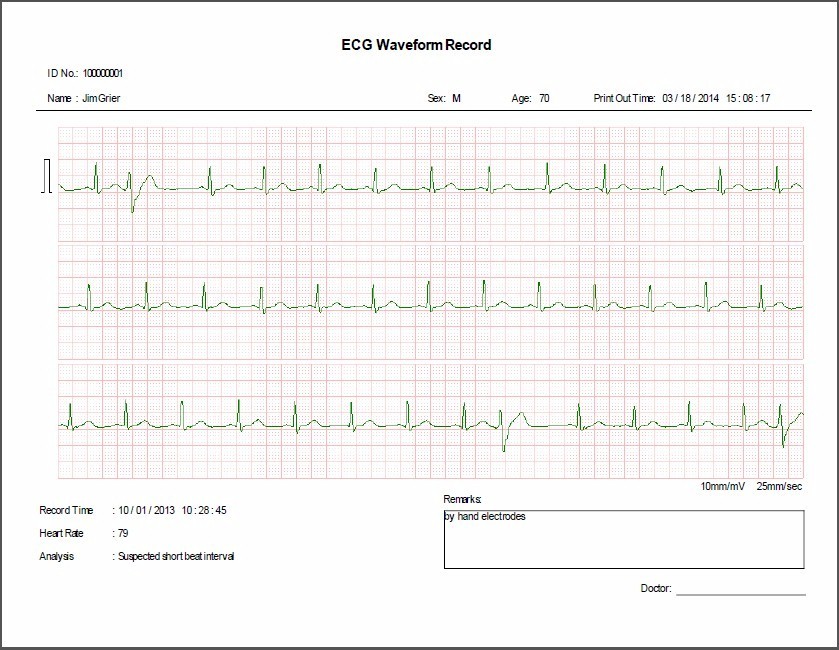
The model allows you to take an ECG from anywhere (chest, legs, arms), stores in memory up to 10 hours of data and allows you to exchange them with devices via Bluetooth, USB or Zigbee. The data then, of course, can be printed.
Reka E100

Characterized as the simplest device with easy access to data on a computer or, more recently, using a smartphone. The gadget does not have its own display, and ECG can be recorded again in two ways: by holding fingers in the right places or using cables.
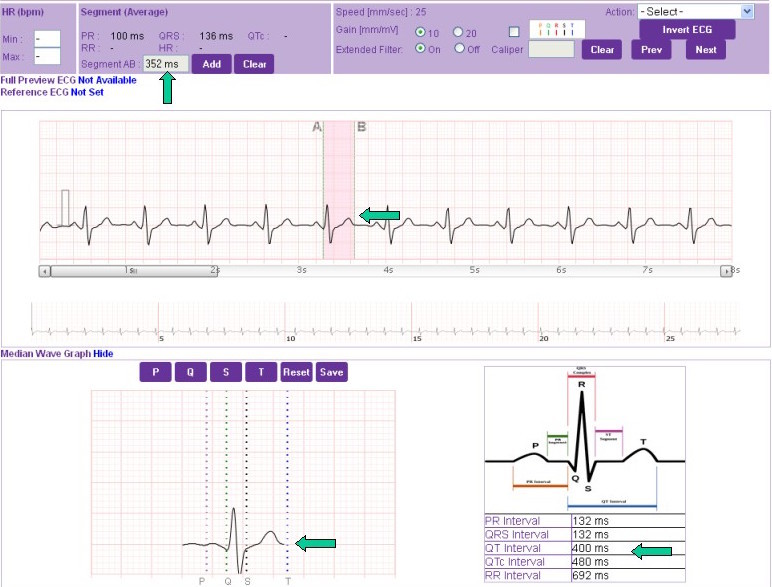
ECG dongle

Russian development , to which we devoted a review, where one of the authors of the project spoke in the comments. The flash drive is connected to the Android-smartphone using a special adapter, and the recorded results "fall" into the device’s memory.
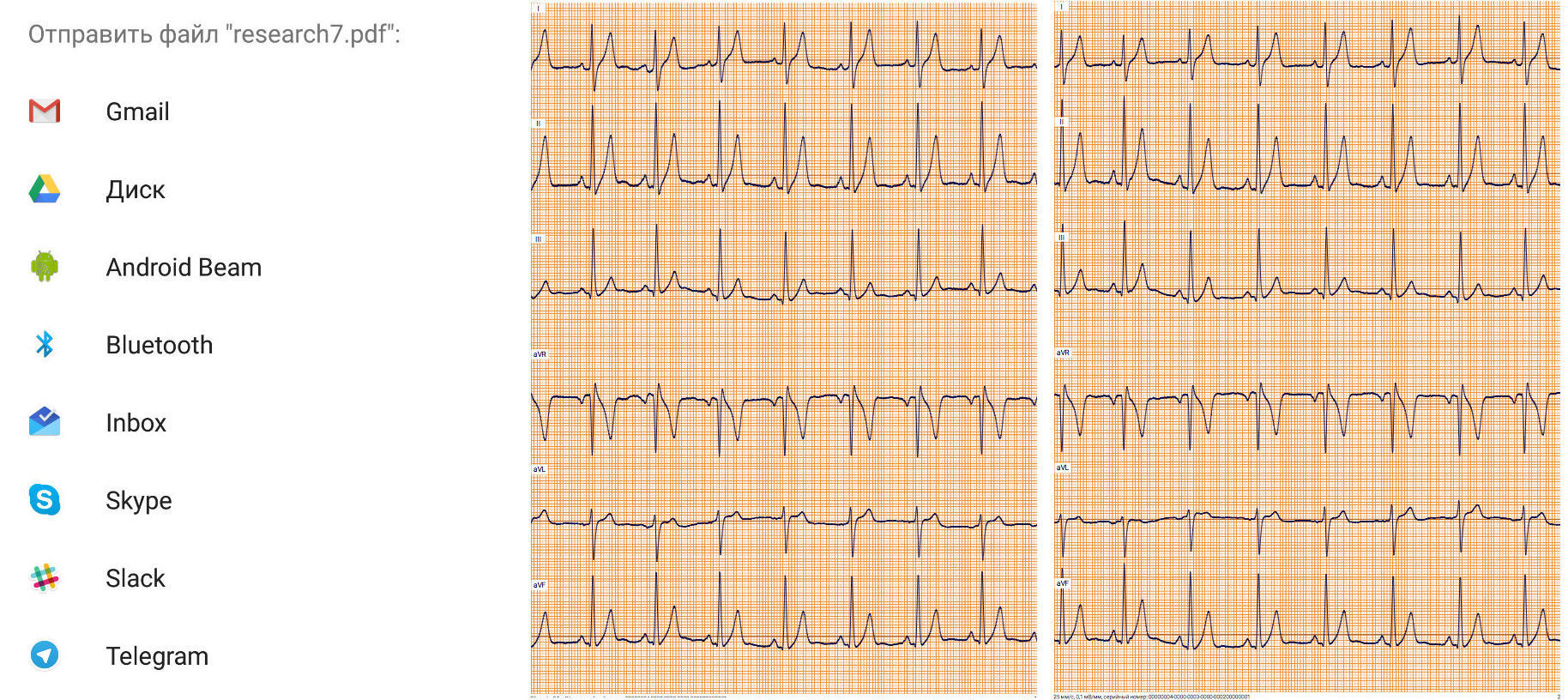
It is also proposed to use the cloud, where you can get the comments of cardiologists for an additional fee. According to the creators, now there is a process of obtaining all the necessary medical papers for the device.
Contec ECG80A
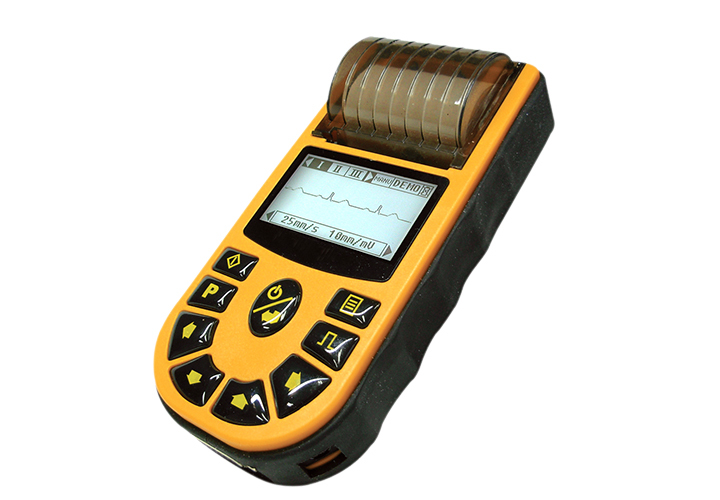
A full-fledged portable 12-channel cardiograph that immediately prints an ECG. In parallel, real-time ECG data is displayed on the device’s small display.
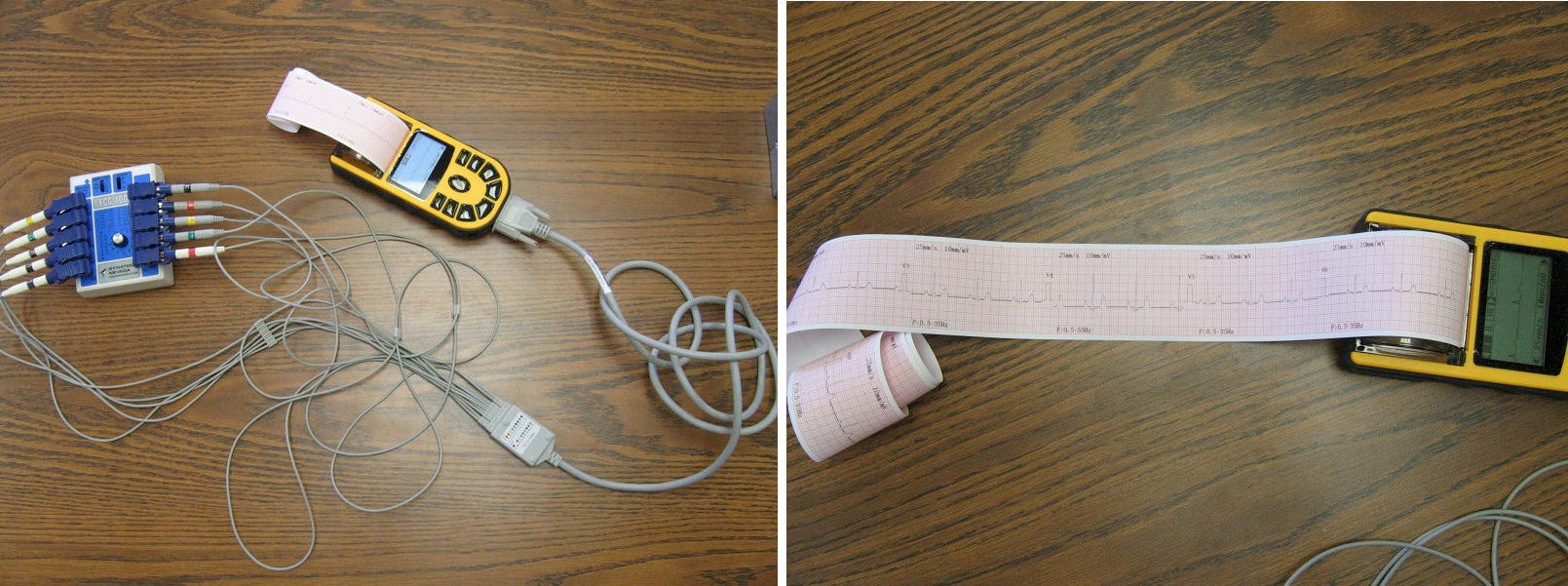
The device does not have internal memory, so you need to carefully monitor the tape, since if it is lacking, the data will be completely lost.

AfibAlert

Device , which was created specifically for the diagnosis of atrial fibrillation , although it records the ECG completely. After the procedure, the user receives instant color notifications, and if the “red phone” lights up, you must immediately contact a doctor! A yellow indicator means that no data has been received, and green, which is logical, notifies that there are no risks at the moment. During the measurement, heart rate is also displayed.

ECG data can be extracted in several different ways, including using mobile applications for iOS and Android. The user can also upload them via USB to a computer and send them to the AfibAlert cloud to open up the possibility for their doctor to work with them.
AliveCor Mobile phone

case that allows you to record ECG. Quite a “loud” project, actively supported by the press. Measurement data remains in the smartphone’s memory and can be viewed on a computer. Also, for an additional fee, you can get a decoding of a cardiologist.

Measurements are most conveniently made by placing fingers on the contacts of the device. At the same time, you can “change” the leads by taking measurements from the chest or by applying a cover to the leg. Currently, the range has expanded, and users are invited to buy a separate “plate” with contacts instead of a cover.
CardioQvark

Another case that alinatestova recently wrote on Geektimes . Despite the outward resemblance to AliveCor, the device works using a different technology, and its menu is a little more informative. At a meeting with the authors of the project, we were told that the process of obtaining a medical certificate was launched for the project, and at the moment it is undergoing clinical trials in Moscow hospitals.

CardioQuark allows you to record ECG, control the balance of the autonomic nervous system, and analyze stress levels. For the convenience of the user in the application there is a "traffic light scale", which is not a diagnosis! But it tells how the condition is satisfactory / not satisfactory. The rest of the application communicates in a “medical” language that is understood by a cardiologist, whose services are available in the cloud service.

The project was created by domestic scientists.
ECG-Chek

Another case with two electrodes, which allows you to record ECG on a smartphone or view it on a computer. It has its own warning system.

CardioPad

Most similar to both of the previous ones - CardioPad from RootiLabs. In fact, it will be a slightly cheaper analogue of the W / me2 tracker , and in this case, the ability to measure pressure will also remain a key advantage over other gadgets.

While CardioPad's interface is not completely clear, and perhaps it will work with the W / me2 application. There, the ECG is shown in this format:

In Russia, W / me2 appeared in September last year, and by now we have spent a lot of time on our part with software. In the latest update, the ability to calibrate the device became available, after which the pressure readings became even more accurate.
Dimetek Micro

Portable and standalone deviceapproved by the FDA. It can be used in several modes, including as a halter - for continuous monitoring. Data is stored in the device’s memory, so access to the doctor’s data is impossible. In order to get a consultation, it is necessary to extract: print or send the ECG by mail.

Express-ECG can be recorded with two fingers, while for longer monitoring it is proposed to use electrodes, which are also equipped with the device. Plus, a special carrying bag is included.
HeartCheck Pen The pen was

once the first device approved by the FDA. It is convenient to carry in your pocket, easy to use, and the principle of action is to pinch with two fingers.

The device is recommended as a means of monitoring after heart attacks, strokes or heart operations. It will also help to track the effect of drugs on health. No additional wires and electrodes are provided. Up to 20 measurements are stored in the device’s memory, after which they must be saved on a computer. The pen itself has a small digital display.
InstantCheck A

console-like ECG device offers 30-second recordings that can be instantly watched on the display, stored in the device’s memory, and then retrieved to the computer using a cable.

There is also a continuous monitoring mode, but this can not be called a full-fledged halter, since recording is carried out all the same for the last 30 seconds!
ChoiceMmed MD100E

Deviceit has a display that allows you to instantly display data, allows you to take an ECG c with your fingers due to the electrodes located on the sides or with the help of special cables that are also included.

The entire measurement process is visible on the display, and a brief analytics is offered in the final: a general characteristic in the form of a system of emoticons and data on heart rate. For further work with data, you need a computer and special software that is included on the disk.
ECG PC-80V

Simple, compact, and one of the first portable ECG monitors to survive for several generations. Currently, the more famous model is 80B .

The model allows you to take an ECG from anywhere (chest, legs, arms), stores in memory up to 10 hours of data and allows you to exchange them with devices via Bluetooth, USB or Zigbee. The data then, of course, can be printed.
Reka E100

Characterized as the simplest device with easy access to data on a computer or, more recently, using a smartphone. The gadget does not have its own display, and ECG can be recorded again in two ways: by holding fingers in the right places or using cables.

ECG dongle

Russian development , to which we devoted a review, where one of the authors of the project spoke in the comments. The flash drive is connected to the Android-smartphone using a special adapter, and the recorded results "fall" into the device’s memory.

It is also proposed to use the cloud, where you can get the comments of cardiologists for an additional fee. According to the creators, now there is a process of obtaining all the necessary medical papers for the device.
Contec ECG80A

A full-fledged portable 12-channel cardiograph that immediately prints an ECG. In parallel, real-time ECG data is displayed on the device’s small display.

The device does not have internal memory, so you need to carefully monitor the tape, since if it is lacking, the data will be completely lost.
A source
For those who are interested : Probably the most detailed analysis of most of the ECG devices presented here with detailed anboxes, screenshots, and characteristics. Prepared by a doctor!
